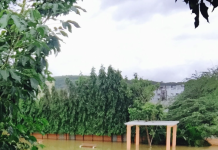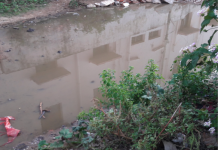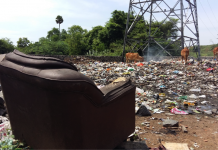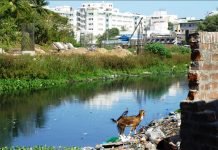A compelling photostory can be created when you enable the reader, subconsciously, to create a mental picture of your story in their mind. You don’t need high end cameras for this. You need to know a few basic concepts that are applicable, irrespective of the camera you have, and the visual medium you choose.
Let me ask you a question. Why do you like a great documentary or an animation film? I am sure one of the reasons would be, they transported you to a completely different world — Their world. Similarly, the role of a photojournalist is to transport the viewer into their story, and create images that evoke a sense of feeling that you aspire to create in the minds readers. This is a great way to explore visual storytelling. In fact, it is an interesting approach to learn about social issues too.
Many of you wouldn’t be excited to know about a social problem, because you would think it is a drab. But, imagine learning about it while working on a photostory. For example, how is waste being disposed in your locality? How did a lake near your house disappear? What do you think is the energy consumption of a community? When you pursue socially relevant stories like these, you not only understand the issue, but also, you get to create your own expression of it through a photograph.
Creating a mental picture in the viewer’s mind begins with a logical approach. Here is a succinct storyline to explain this process.
“There are numerous small ports across the vulnerable, eastern coast of India. They are the livelihoods of lakhs of fishermen who are dependent on these coasts. While many of them catch fish, someone of them look for tiny creatures, like the crabs. So many fisher folks scout the shores for this crustacean to catch them using a technique that they have been practising for a many decades. The crab holes along the coast are dug, crabs are caught, tied and bagged.”
Let’s now decode this from the viewers point of view. What would they like to see? Broadly, the viewers will like to see:
- The eastern coast of India
- Fishermen working on the coast
- A close up photo of a crab
- Fishermen scouting the shores for crabs
- Fishermen digging holes
- Fishermen taking the crab out
- Fishermen tying them
Now let’s look at the pictures.

Here is the photograph of the eastern coast of India. This is called the ‘Establishment shot’ or the ‘Wide shot’ because it establishes the place of the story and it is a wide frame.
Next in the story is a fishermen working near a small port, so we need to show that.

This is called the ‘mid shot’. It is not as wide as the establishment shot, but at the same time, it is a self explanatory photograph. You can see the beach, fishermen, and a light house, so a port should be next to it. In addition to this, you see the breakwater (a characteristic feature of a port).
Since both the shots are pretty distant, another photograph that shows the fishermen more closely will only enhance the story. This is again a ‘mid shot’ and, the photo is so characteristic go a fisherman that their work in unmistakable.
(Do note the angle: Remember the “Bend. Go eye level” tip?)

Now, we need to see the crab, as it is the one of the main focus of the story. This is called the ‘Close up’ shot, as it is taken very close to the subject.

Next we need to show the fishermen scouting the shores, digging for crabs, taking out one, and tying it.





Can you think about the last photograph that will complete this story? It is the image of crabs being sold in the market and people buying them. If you decode a compelling photostory online or in any magazine, you will find similar sequences. They will have an establishment shot, mid shot and close up shot and an extreme close up. But, the way in which these shots are pre-visualized and ‘made’ depends on the imagination and craft of the photojournalist. Its here a photostory will stand the test of time.
Here are a few tips to make a compelling photostory.
- Pre-visualize, and construct a story in your mind after you finish the ‘Recce’ process.
- Be alert and aware of your surrounding and look out for frames that depict your story.
- Follow the photography tips article to create socially relevant pictures.
- Get a variety of establishment shots and mid shots that depict different locations pertaining to your story. Having a point of reference enhances the establishment shots.
- Concentrate on photographing many close up shots. They will connect with the reader more closely, and help move the story forward.
- Work on your photostory at different times of the day. There are more chances of finding something new, and you will have a range of pictures to choose for your final story.
- Have someone along with you when you are going to document your photostory. Working on this process with a subject expert will be open up tremendous possibilities.
Finally, send us your story for feedback and critique. Wish you all the best for your journey as a photojournalist.






